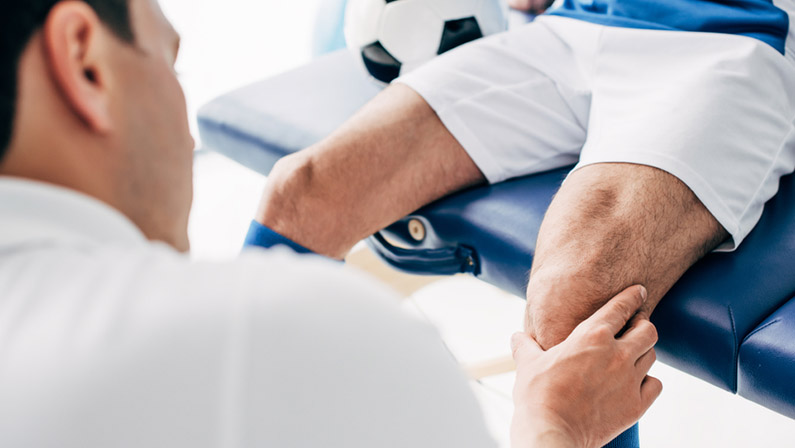Injuries of the knee can occur from sports injuries as well as accidents like falls or road traffic accidents. The most commonly injured ligament of the knee is the anterior cruciate ligament (ACL). The ACL of the knee is an important stabilizer and is required where the affected knee is used as a pivot. Sports that require a quick change of direction such as football, basketball, tennis, badminton, squash, hockey, skiing and snowboarding require an intact anterior cruciate ligament (ACL).
Symptoms of a Torn ACL
- Pop sound/sensation of the knee when the ACL tears
- Knee swelling which occurs rapidly after the injury
- Knee ‘gives way” (Knee Instability)
Diagnosis of a torn ACL
A torn ACL can be suspected during clinical examination and confirmed with a MRI of the knee.
Types of Treatment
- Physiotherapy
- Knee Brace
- Anti-inflammatory Medications
- Keyhole, minimally invasive Anterior Cruciate Ligament (ACL) Reconstruction
Do I need an Anterior Cruciate Ligament (ACL) Surgery?
Patients who are very active in sports that require the knee with the anterior cruciate ligament (ACL) injury to act as a pivot, may opt for anterior cruciate ligament (ACL) surgery. These sports include football, basketball, tennis, badminton, squash, hockey, skiing and snowboarding.
Anterior cruciate ligament (ACL) surgery is done using keyhole/arthroscopy. This uses small cuts in the knee through which a camera is used to look into the knee joint and various instruments can be used to perform the surgery.
The anterior cruciate ligament (ACL) is usually not repaired, but reconstructed. This means that the 2 torn ends of the anterior cruciate ligament (ACL) are not joined back together, which is often done for other torn ligaments or tendons. Instead, a graft (ie tissues from elsewhere) is taken to reconstruct the anterior cruciate ligament (ACL). The new graft can be taken using the patient’s own tendons or ligaments (autograft) or another person’s treated tendon or ligament (allograft).












